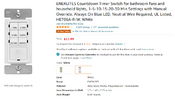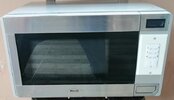I "horsetraded" for a '88 Chevrolet (Isuzu) Trooper 4x4 so that we could go off-roading with our friends without using our daily drivers. When we got it, the windshield wipers and the high beam headlights didn't work. I successfully rebuilt the wiper motor, but whenever I shut off the wipers they would immediately stop and never return to the park position. The manual referred to a "parking relay circuit board" but I was never able to find it.
I traced the high beam problem to the dimmer switch on the steering column combination control. While looking in the manual to see which wire on the combo switch plug went to the high beams, I noticed one wire was labeled "self parking." Turned out that the self park circuit board is part of the combo switch. I removed the board and cleaned it. The picture below shows the solder side of the board. There were 25 fractured solder joints. Also found additional bad solders on the dimmer control board. Resoldered ALL of the joints on the entire combo switch. Now the high beams work and the wipers park perfectly.
Simple repair for two frustrating problems.


I traced the high beam problem to the dimmer switch on the steering column combination control. While looking in the manual to see which wire on the combo switch plug went to the high beams, I noticed one wire was labeled "self parking." Turned out that the self park circuit board is part of the combo switch. I removed the board and cleaned it. The picture below shows the solder side of the board. There were 25 fractured solder joints. Also found additional bad solders on the dimmer control board. Resoldered ALL of the joints on the entire combo switch. Now the high beams work and the wipers park perfectly.
Simple repair for two frustrating problems.





